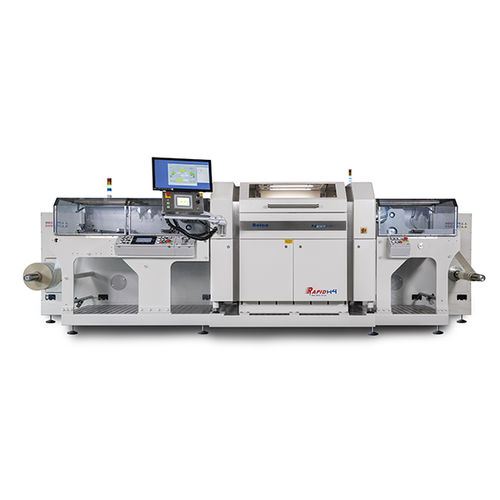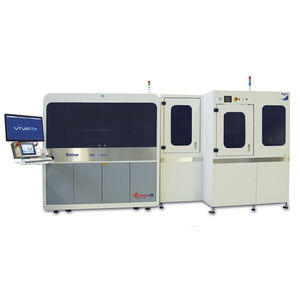
Electric test equipment Rapid H4 Flexautomaticfor flexible printed circuit (FPC)for the automotive industry

Add to favorites
Compare this product
Characteristics
- Test type
- electric
- Operating mode
- automatic
- Test material
- for flexible printed circuit (FPC)
- Sector
- for the automotive industry, for the electronics industry, for medical applications
Description
Seica has designed the RAPID H4 FLEX Next> for flex PCBs with a dedicated vacuum plate in the test area to minimize board warpage for the extremely thin flex circuits. This is Seica response to the constant demand for testing flex PCBs, which are rapidly spreading around the consumer electronics, automotive, medical, smart home industries and others. These are designed to fit into small areas with bending improving the miniaturization process and the high-density mounting design.
FULL TEST LINE SOLUTION FOR REEL TO REEL MARKET
The RAPID H4 Flex is the only Flying Probe on the market able to test the Flex-PCB produced in a big REEL. In order to minimize the cost and increase the productivity, some high-volume Flex-PCBs manufacturers have installed lines specifically intended for the production of circuits in continuous reel web (reel to reel).
SYSTEM STRUCTURE
The whole system is structured in 3 main parts listed below.
LOAD AREA: It is characterized by a primary unwinder with roll-carrier spindle followed by a pulling unit with air brake.
TEST AREA: The lack of structural rigidity of FLEX-PCBs requires the use of a general purpose vacuum table. For this reason, the RAPID H4 FLEX features a vacuum tray installed into the work area and a vacuum pump/blower. Moreover, the tester is equipped with a stamper to automatically mark the bad foil after the test procedures.
UNLOAD AREA: It is characterized by a pulling unit with air brake for controlled feeding of materials and by an output assembly with aligner and primary winder with 3” and 6” roll-carrier spindle.
Catalogs
No catalogs are available for this product.
See all of Seica‘s catalogsRelated Searches
- Test machine
- Automatic test machine
- Vertical test machine
- Universal test machine
- Digital testing system
- Automatic test equipment
- Test set
- Digital test machine
- Compact testing system
- Compact test machine
- Battery test machine
- Multi-parameter test machine
- Network tester
- Test kit for the automotive industry
- Quality test kit
- Automatic test set
- Analog tester
- Compact test set
- Printed circuit testing machine
- Battery test equipment
*Prices are pre-tax. They exclude delivery charges and customs duties and do not include additional charges for installation or activation options. Prices are indicative only and may vary by country, with changes to the cost of raw materials and exchange rates.


